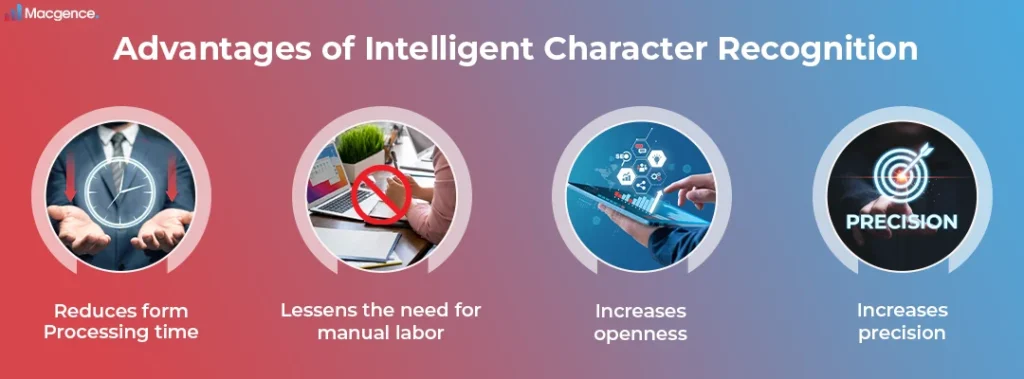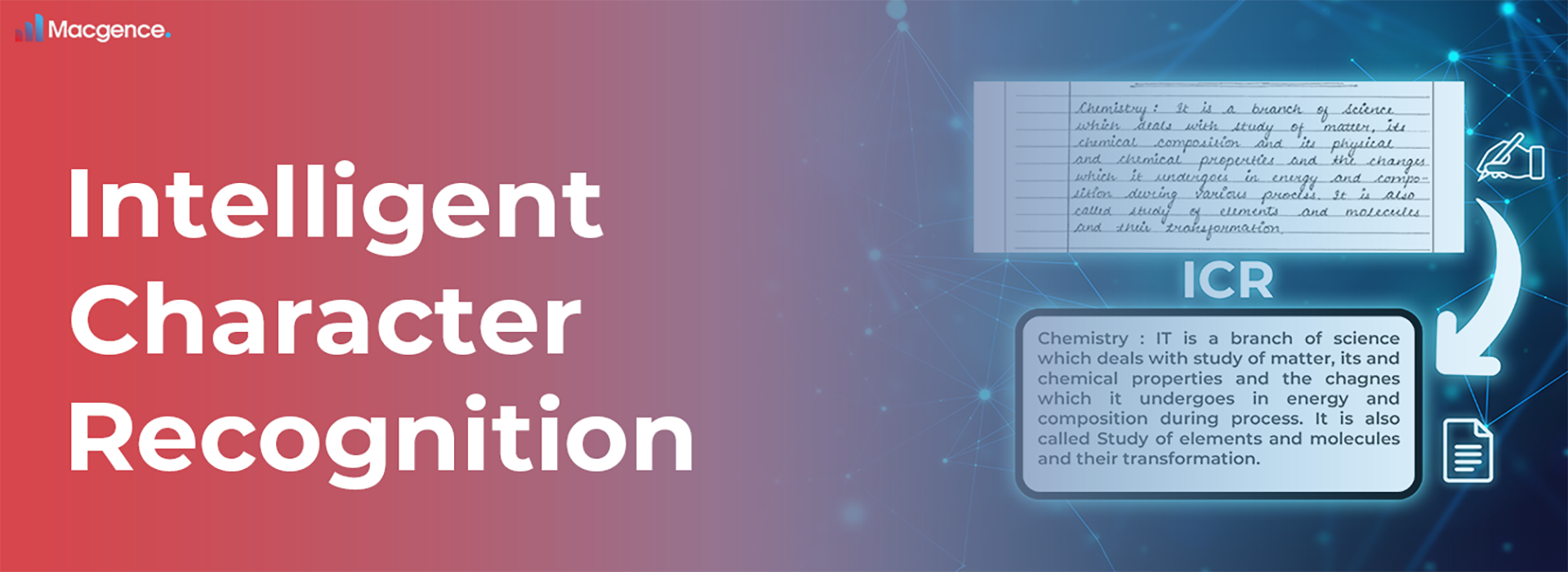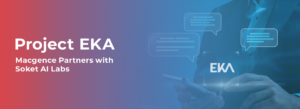What is Intelligent Character Recognition (ICR)?
Today’s digital environment makes it more necessary than ever to comprehend how to get the maximum out of handwritten communication. In addition, Intelligent Character Recognition (ICR) makes it easier to digitize handwritten text from images. It resembles data processing’s Superhero. However, how does image character recognition (ICR) vary from traditional optical character recognition (OCR) systems? Let’s now explore the evolution of data gathering and administration using intelligent character recognition (ICR). In this article, we will thoroughly examine the functions and uses of ICR. Now, let us start by unraveling the mystery around Intelligent Character Recognition!
In this article, we’ll go over the ICR foundations, how it varies from OCR, and how it makes data processing tasks easier. We are also gonna discuss its applications across various sectors and the significant advantages it offers businesses who are trying to manage their operations more effectively.
What is Intelligent Character Recognition (ICR)? let’s Explore
A better version of optical character recognition is known as intelligent character recognition (ICR). It can read handwritten material and understand it as well. ICR is quite good at identifying and digitizing different types of handwriting. It makes use of machine learning methods and artificial intelligence. Over time, they pick up and adjust to different handwriting styles. ICR becomes increasingly accurate at comprehending the subtleties of different writing styles as a result of this learning process.
ICR is used in many different domains. It processes handwritten papers, digitizes forms, and automates data entry. It is a crucial piece of technology that improves the usability and efficiency of digital systems when processing handwritten input.
OCR vs. ICR
ICR has many of the same applications that you would often find in OCR systems, but it also allows users to search and classify handwritten documents into information that is machine-readable.
In case your business has to examine large amounts of handwritten papers including both structured and unstructured data, adding image recognition to your data collection process is a great choice. It increases the efficiency of data capture by lowering the possibility of human mistakes and providing a reasonable level of accuracy.
How do ICR and IDP vary from one other?
Machine learning (ML) and artificial intelligence (AI) methods are used in intelligence document processing (IDP) to handle dis-structured, semi-structured, and also structured documents. This makes it possible for other technologies to read and process the document content. Straight-through processing is automated by IDP by integrating OCR technology with other intelligent processing technologies. Business document data is automatically captured, extracted, and processed by IDP.
Structured, semi-structured, or unstructured data can be converted into printed, typewritten, or handwritten documents using a variety of IDP versions. IDP transforms the data into a format that is readable by machines. IDP software can understand the context of the data it reads thanks to natural language processing (NLP).
How does intelligent character recognition work?

ICR extracts documents for businesses using AI neural networks. ICR follows these procedures when the documents are uploaded to the ICR scanner:
- Using an internal database, the technology scans the papers and automatically deciphers any handwritten text and typefaces.
- The program may request user verification before moving on to the next stage.
- Next, using pre-established rules, it extracts the data and structures.
- It verifies the data for mistakes, highlights any irregularities, and forwards them to a worker for examination.
- ICR automatically enters the data into the appropriate systems after processing the papers.
- The most important aspect of ICR to remember is that it provides businesses with access to information in a standardized, accurate, and readable way.
What Uses Does Intelligent Character Recognition Serve?
ICR and related technologies aim to minimize human data input mistakes and streamline business operations. The following sectors can benefit from the use of intelligent character recognition:
Real estate companies: Scan, check, and digitize paperwork and contract agreements.
Banks and financial services: Read data from client forms, loan applications, and KYC checks in banks and financial services.
Insurance firms should digitize their claims paperwork to increase openness and maintain better records.
Manufacturing and transportation companies: Scan shipment and address proofs, invoices, bills of lading, and receipts.
Governmental and public sector organizations: They should scan handwritten applications like name changes and driver’s license forms, as well as read and evaluate legal papers.
Healthcare and life sciences: Compile patient data and forms into a single, conveniently accessible database by processing, digitizing, and organizing them.
Advantages of intelligent character recognition

ICR/iOCR seeks to make data simpler so businesses can concentrate on making decisions and securing their data.
Reduces the time it takes to process forms
Organizations may save time and money by automating tasks like data extraction and directing resources to higher-value areas.
Lessens the need for manual labor
To reduce labor costs associated with data entry, staff might use ICR software to interpret and capture handwritten text data. They may then concentrate on more fascinating work that enhances job satisfaction and helps the company.
It Increases the openness
ICR digitizes handwritten text quickly, enabling business users to more easily organize and retrieve documents.
It Increases the precision
Data is easily available because ICR assures fewer human mistakes and imports information more quickly by minimizing the quantity of manual data entry.
Macgence: Pioneering Intelligent Character Recognition (ICR)
Leading the way in Intelligent Character Recognition (ICR), which is transforming data processing, is Macgence. Macgence’s AI neural networks fast and reliably decipher handwritten text, seamlessly incorporating ICR into workflows. Customized solutions improve productivity and efficiency while meeting a range of corporate demands. Macgence enables sectors to digitize documentation and streamline procedures, ranging from healthcare to real estate. Businesses may access a wide range of technologies with Macgence, which helps them succeed in the current digital environment.
Conclusion:
Businesses may unleash new levels of productivity and accuracy by integrating ICR into processes seamlessly with powerful AI neural networks. Customized solutions meet the specific requirements of many industries, enabling businesses to easily digitize paperwork and streamline processes.
ICR transforms the way organizations function in the digital age, transforming everything from healthcare to real estate. Businesses may confidently traverse the intricacies of data processing by utilizing the power of ICR. As we move forward, let’s seize the opportunity presented by Intelligent Character Recognition and pave the path for a day when handwritten text will be a crucial tool for achieving commercial success.
FAQs
Ans: – ICR reduces human labor and increases efficiency by automatically deciphering handwritten language, extracting data, and structuring it using AI neural networks.
Ans: – ICR speeds up processing, lowers the need for human labor, improves data accessibility, and improves data accuracy, all of which contribute to cost savings and better decision-making.
Ans: – ICR assures consistent, accurate, and readily retrievable data by automating data extraction and reducing human error, which improves organization and decision-making processes.
You Might Like
February 28, 2025
Project EKA – Driving the Future of AI in India
Artificial Intelligence (AI) has long been heralded as the driving force behind global technological revolutions. But what happens when AI isn’t tailored to the needs of its diverse users? Project EKA is answering that question in India. This groundbreaking initiative aims to redefine the AI landscape, bridging the gap between India’s cultural, linguistic, and socio-economic […]
April 5, 2025
The Ultimate Guide to Geospatial Data Collection Providers
Geospatial data collection has become an essential part of modern industries, playing a vital role in urban planning, environmental monitoring, transportation, agriculture, and defense. With the advent of advanced technologies such as artificial intelligence (AI), satellite imaging, drones, and LiDAR, the geospatial industry is witnessing a rapid transformation. In this blog, we will explore some […]
April 1, 2025
The Strategic Benefits of Partnering with Macgence for Model Evaluation and Validation
In the rapidly evolving AI landscape, ensuring robust model performance is not just an advantage—it’s a necessity. For businesses leveraging AI/ML technologies, partnering with a specialized validation partner like Macgence can mean the difference between unreliable prototypes and enterprise-grade AI solutions. At Macgence, we bring unmatched expertise in AI model evaluation and validation to help […]
March 24, 2025
Natural Language Generation (NLG): The Future of AI-Powered Text
The ability to generate human-like text from data is not just a sci-fi dream—it’s the backbone of many tools we use today, from chatbots to automated reporting systems. This revolution in artificial intelligence has a name: Natural Language Generation (NLG). If you’re an AI enthusiast or a tech professional, understanding NLG is essential for keeping […]


 Previous Blog
Previous Blog







